A Quick Guide to Bathroom Sinks
A Quick Guide to Bathroom Sinks
When it comes to choosing a bathroom sink, the number of options available can feel overwhelming. From sleek modern designs to classic and traditional styles, finding the right sink for your bathroom requires careful consideration. You’re remodeling, building a new home, or simply upgrading your sink, understanding the different styles, materials, and installation types can make the process much easier.
This guide will walk you through the key factors to consider when selecting a bathroom sink. We’ll explore various styles, such as vessel, undermount, and wall-mounted sinks, along with their pros and cons. You’ll also learn about the best materials for durability and maintenance. Hopefully, by the end of this guide, you’ll have a clearer idea of which sink best suits your preferences and lifestyle. Whether you’re looking for a space-saving option for a small bathroom or a statement piece to add to your decor, this quick guide is aimed to help you make an informed decision with confidence.
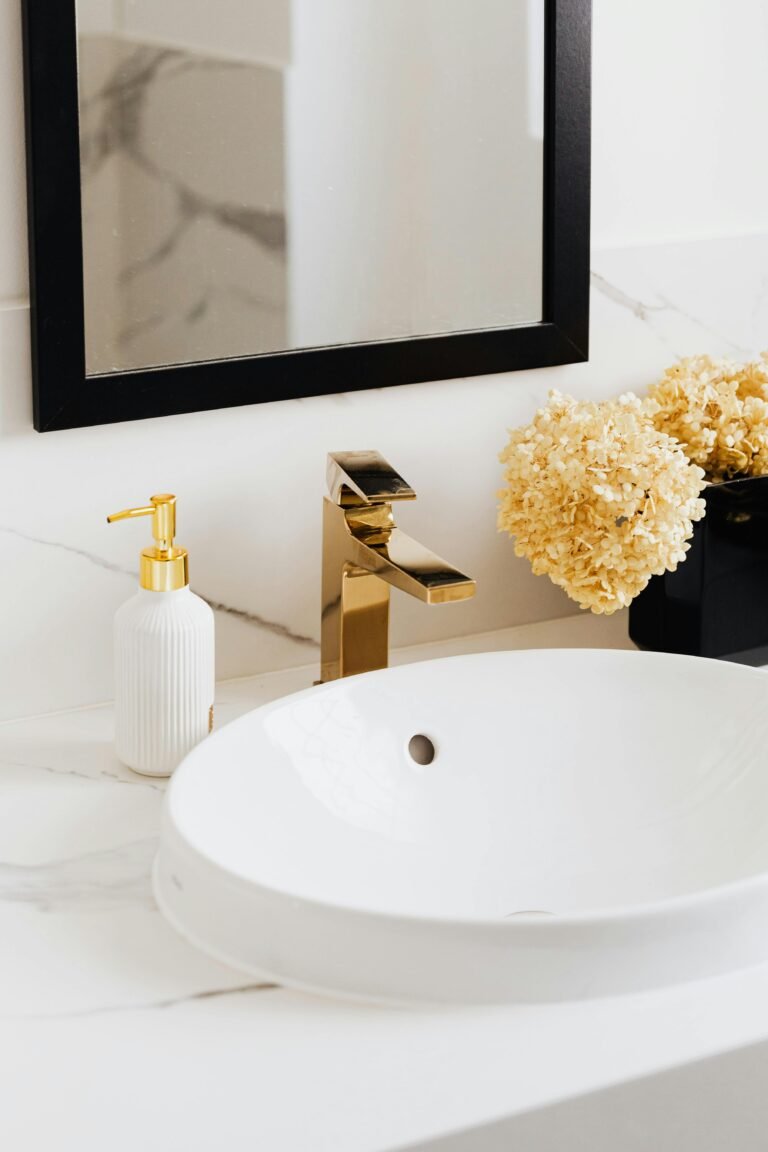
A vessel sink, characterized by its freestanding basin perched atop a vanity or countertop, serves as a striking centerpiece in modern bathroom design. This distinctive fixture not only improves the aesthetic appeal of the space but also introduces a boutique-hotel-like ambiance, transforming an ordinary bathroom into a luxurious one. Vessel sinks are available in a lot of shapes, sizes, and materials—including glass, porcelain, stone, and metal—allowing homeowners to tailor their selection to complement their bathroom’s decor seamlessly.
One of the primary advantages of a vessel sink is its straightforward installation process. Unlike traditional undermount or drop-in sinks that necessitate extensive countertop modifications, vessel sinks require only a single hole for the drainpipe. This simplicity not only facilitates easier installation but also offers flexibility in replacing the sink without significant alterations to the existing countertop.
However, integrating a vessel sink into your bathroom design does present certain considerations. The elevated basin height often necessitates the installation of a taller faucet or a wall-mounted fixture to ensure proper water flow and clearance. This requirement can lead to additional expenses and may involve more complex plumbing adjustments. Moreover, vessel sinks are generally more prone to splashing compared to traditional sinks. The absence of an overflow hole—a common feature in many vessel sink designs—can exacerbate this issue, making it essential to select an appropriate faucet with controlled water pressure and flow to minimize splatter.
Maintenance is another factor to consider. Due to their exposed exterior surfaces, vessel sinks may require more frequent cleaning to maintain their pristine appearance. Materials like glass or polished metal, while visually stunning, can show water spots and fingerprints more readily, necessitating regular upkeep.
Durability is also a consideration, as the exposed edges of vessel sinks can be more susceptible to chipping or damage, particularly in high-traffic bathrooms or households with young children. Selecting a sink made from robust materials such as stone or tempered glass can reduce this risk.
In summary, while a vessel sink can serve as a captivating focal point and boost the overall design of a bathroom, it is important to weigh the aesthetic benefits against practical considerations such as installation requirements, potential for splashing, maintenance demands, and durability concerns. By carefully evaluating these factors, you can determine whether a vessel sink aligns with your functional needs and design aspirations.
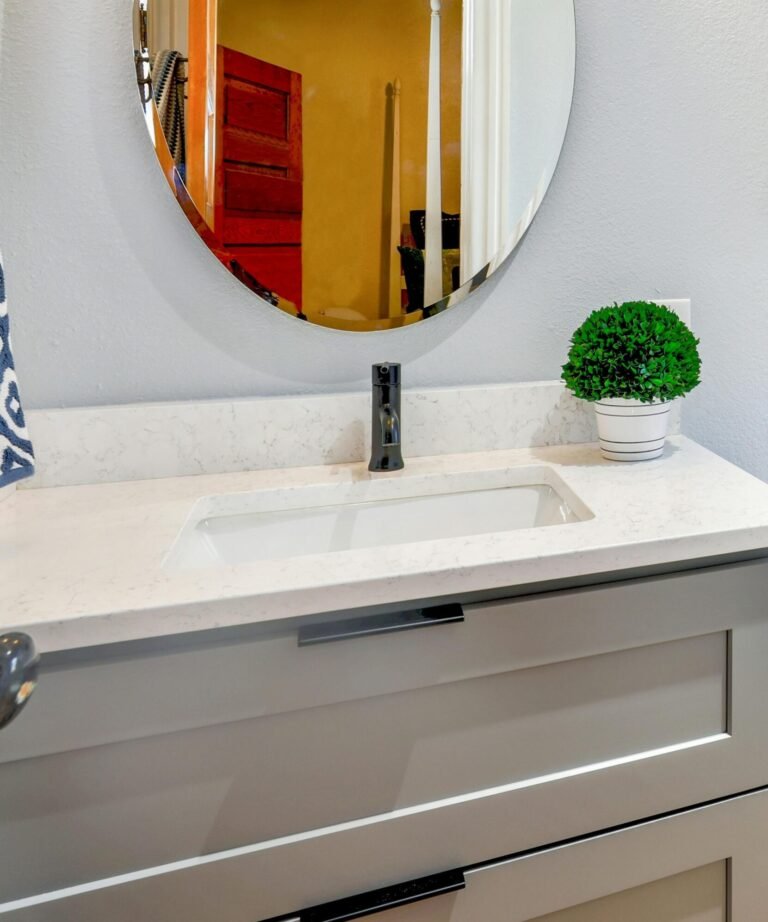
Undermount sinks may be the most popular choice for modern bathrooms. Installed beneath the countertop, they create a seamless transition from the counter to the sink, reducing the visible rim found in traditional drop-in sinks. This design gives a clean and uncluttered appearance. For those who appreciate minimalism and functionality, undermount sinks are an excellent choice.
One of the biggest advantages of an undermount sink is its ease of cleaning. Because it sits below the countertop, there is no raised edge to collect water, toothpaste, or debris. This makes wiping down the counter effortless—any mess can be swept directly into the sink without obstruction. In busy households or shared bathrooms, where spills and splashes are common, this feature can be a game-changer. Additionally, undermount sinks are often paired with solid surface countertops like quartz, granite, or marble, which further improves their appearance.
However, undermount sinks do require professional installation, as they must be securely attached beneath the countertop with adhesive and mounting brackets. Unlike drop-in sinks, which rest on the counter and are easier to install, undermount models rely on a strong bond to hold them in place. This means that they are typically not compatible with laminate countertops, as the exposed edges of the material may be susceptible to water damage over time. Instead, they work best with non-porous materials that can withstand moisture without deteriorating.
While undermount sinks provide a streamlined look, some may find that they take up more cabinet space underneath the counter. Since the sink is mounted below the surface, the plumbing and mounting hardware can encroach on storage space, which might be a consideration in smaller bathrooms. However, for those who prioritize aesthetics and easy cleaning over extra storage, the benefits of an undermount sink far outweigh this minor drawback.
For those looking to maximize space while maintaining a modern design, wall-mounted sinks are another great option. These sinks attach directly to the wall without requiring a vanity or countertop, creating an open and airy feel in the bathroom. By eliminating the need for a bulky cabinet, wall-mounted sinks free up floor space, making them an ideal choice for small bathrooms, powder rooms, or minimalist designs. They also allow for more flexibility in height placement, which can be particularly beneficial in custom or accessible bathroom layouts. Both undermount and wall-mounted sinks provide stylish and functional solutions, depending on the needs of the space.

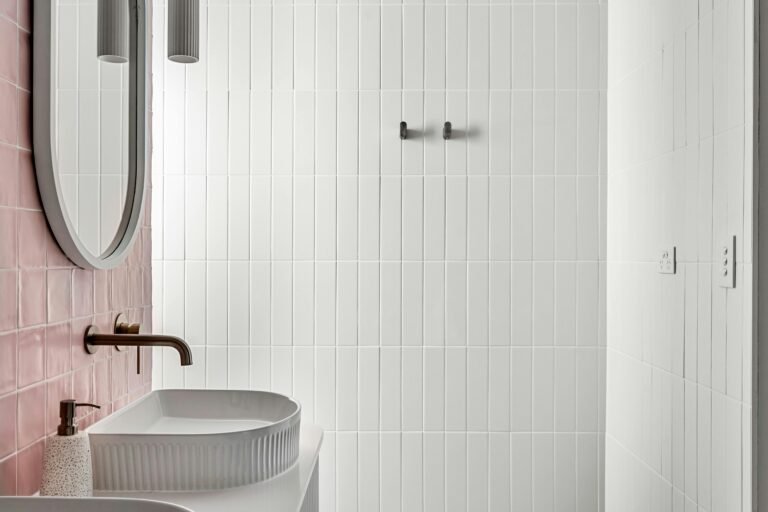
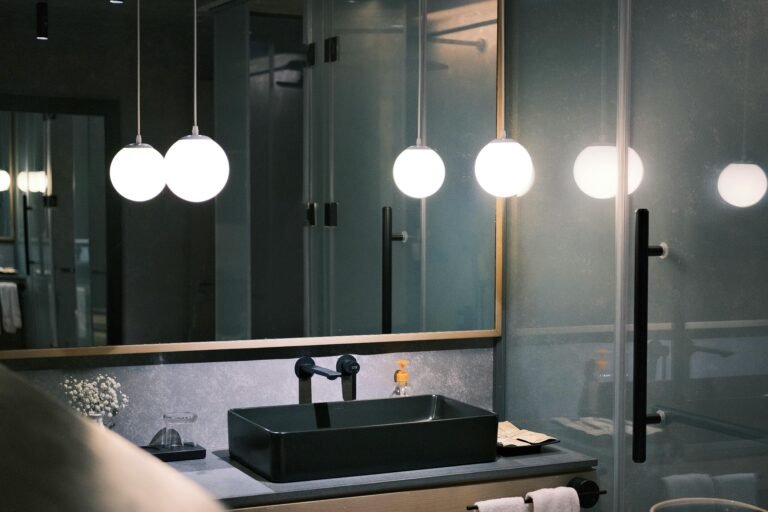
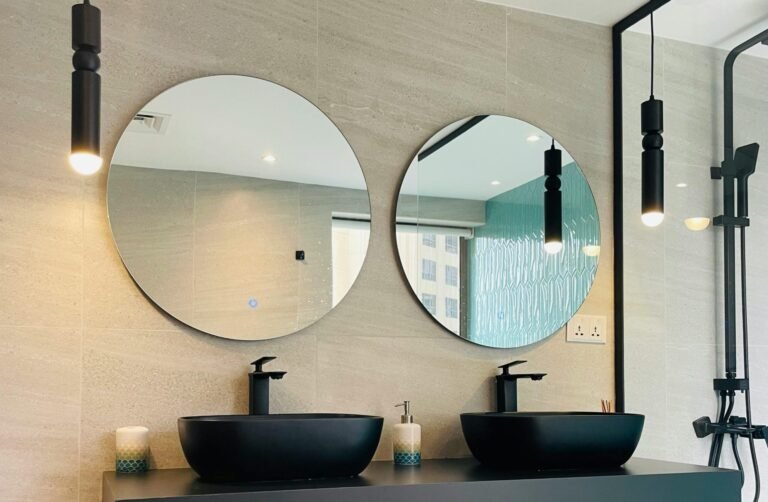
Color
A white sink is a bright, clean, and easily blends with any decor style. It is like a crisp white shirt—timeless and always appropriate. Practicality-wise, white sinks are easy to maintain—at least when you stay on top of cleaning. They do show stains over time, especially if you have hard water, but a little baking soda and vinegar can keep them sparkling.
Best for: Lovers of classic, timeless interiors. Those who appreciate simplicity and want a sink that always looks fresh and inviting.
If you want to add a little drama to your bathroom, a black sink might be exactly what you need. Black bathroom sinks are modern, and luxurious. They make a statement the moment you walk into the room. Unlike white sinks, black ones don’t expose every little speck of dirt. They’re a little more forgiving when it comes to water spots and smudges. That said, soap residue and mineral buildup can be more noticeable, so regular cleaning is still a must.
Best for: Design risk-takers. Those who love modern, high-end aesthetics and want a sink that stands out rather than blends in.
The Truth? You’re Not Stuck with Just Black or White. Maybe neither of these speaks to you. Maybe you’re drawn to earthy tones, like rich mocha or warm taupe. Maybe a soft blush sink is the unexpected pop of color your bathroom needs.
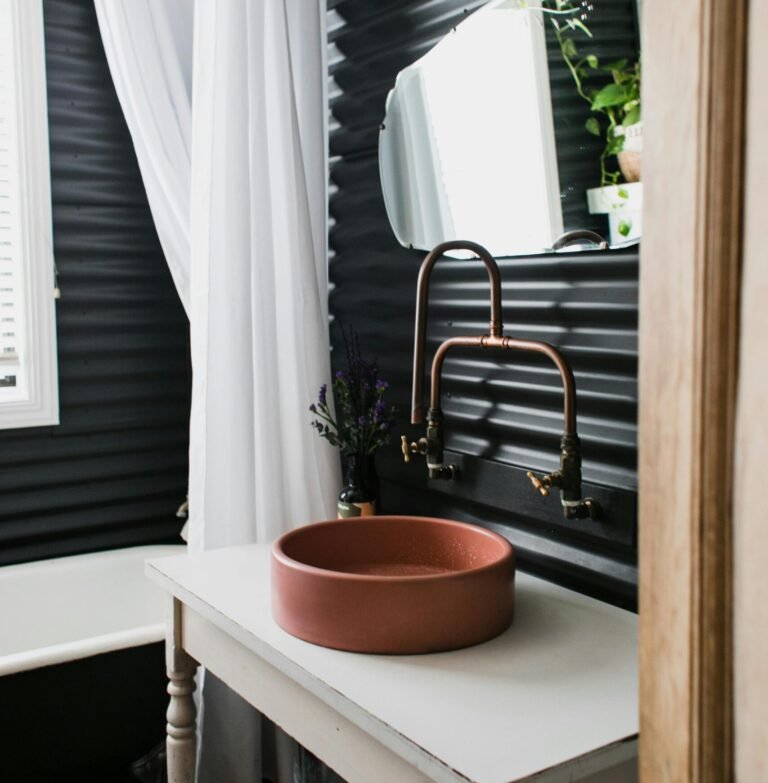
Disclosure: All images in this post are sourced from Pexels.com.
Last updated on: April 4, 2025